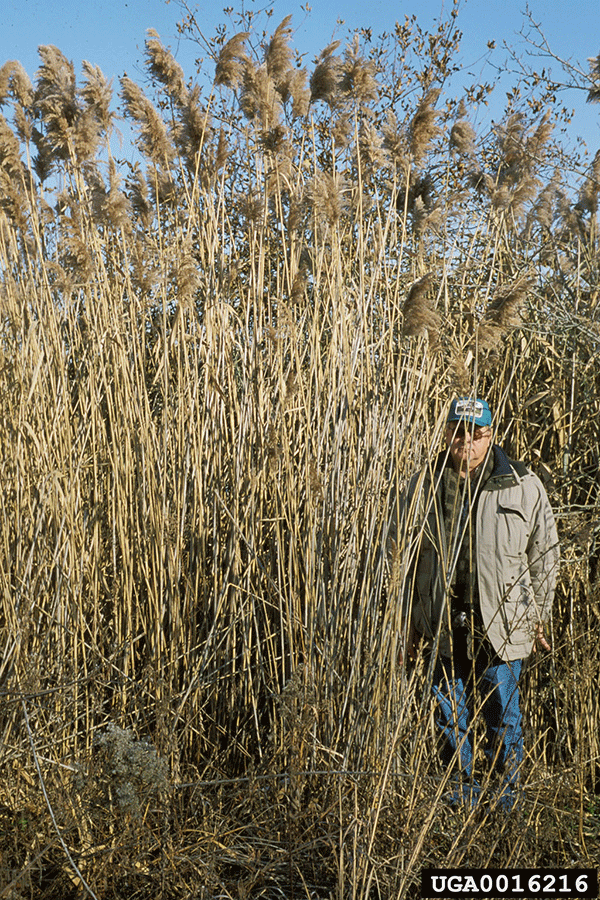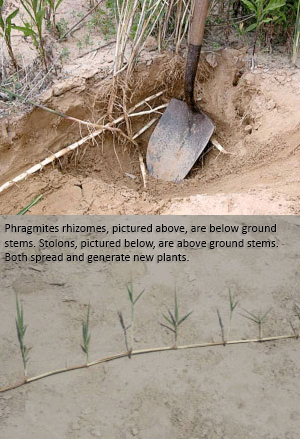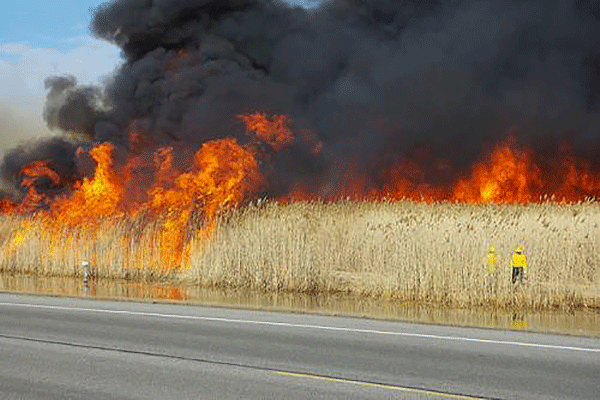Most of us have gladly forgotten about noxious weeds during the winter months. However, the winter months are the easiest time of year to spot phragmites infestations that might be invading your property.
 Image from James H. Miller, USDA Forest Service, Bugwood.org
Image from James H. Miller, USDA Forest Service, Bugwood.orgWhat To Look For
During the summer when everything it is green and growing it is difficult to spot phragmites until it heads out. Phragmites is a deep rooted perennial grass that will grow 6 – 15 feet tall and likes to grow in wetlands, around lagoons, near streams, creeks or in any area that may be wet for a period of time.
Wetland areas typically occupied by cattails are great places to look for phragmites. Phragmites mixes in well during the growing season, but in the winter months when the cattails break down, the phragmites will drop its leaves and stay standing tall with the seed head intact.
Check out the publication "Phragmites vs. Ornamental Grass Identification" for images of common ornamental grass compared to Phragmites.
Control
The best time to get control is when the patch is new and there are just a few scattered plants. Once it gets established it will form a dense circular patch that is very easy to spot, but control will become much more difficult and expensive. Research and field data results show that herbicide control with Imazapyr (Habitat) or Glyphosate (Rodeo) have proven to be the most effective.

How It Spreads
Phragmites spreads in three ways, 1) by seeds blown by the wind or moved by water, 2) through underground rhizomes, and 3) by above ground stolons.
When rhizomes are broken or cut, or if they are moved to a new location in soil, they will grow into new plants. Stolons that run across the top of the ground root down and send up new plants every few inches. Stolons can grow as much as 30 feet in one year.
Why Should I be Concerned?
Phragmites left untreated will create a monoculture and crowd out all other vegetation. It will eliminate natural refuge and feeding grounds for invertebrates, fish, waterfowl and limit recreation values for birdwatchers, walkers, naturalists, boaters and hunters. The tender-dry vegetation left in the fall creates the potential for fast-spreading fire that can threaten surrounding areas including homes and buildings.
More Information
Contact the Lancaster Weed Control office at (402) 441-7817 or review Landowners Guide for Controlling Phagmites.

